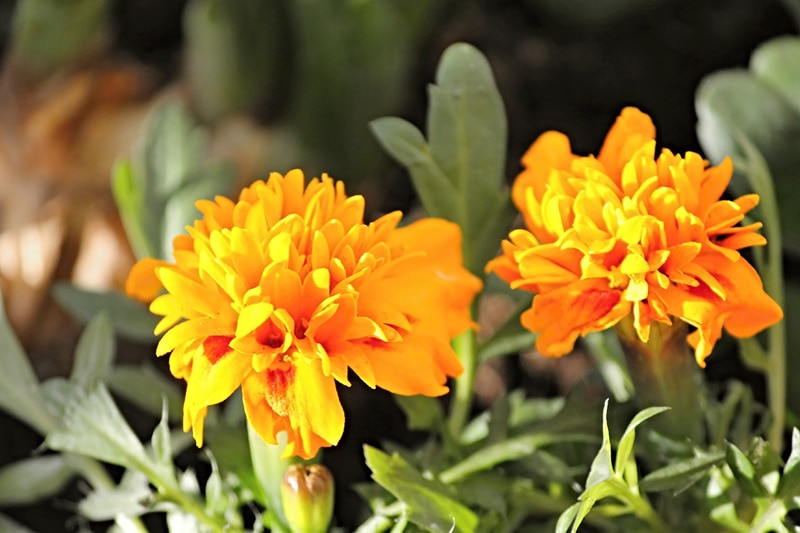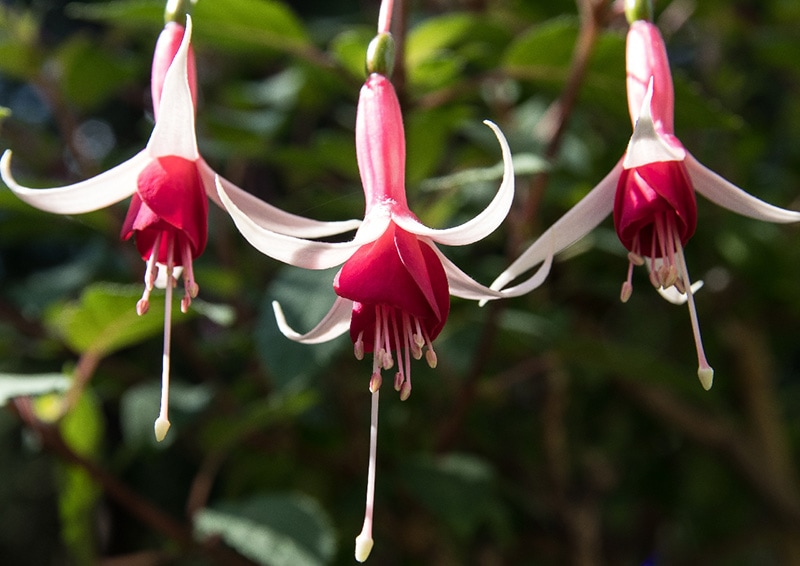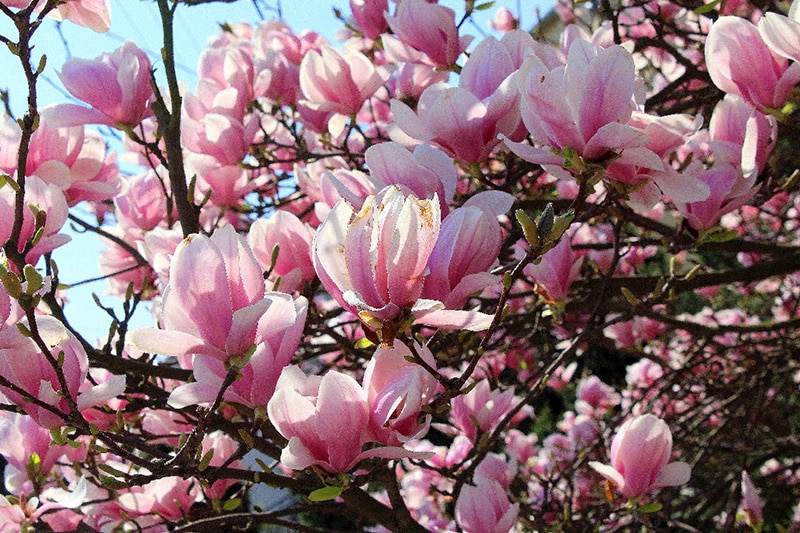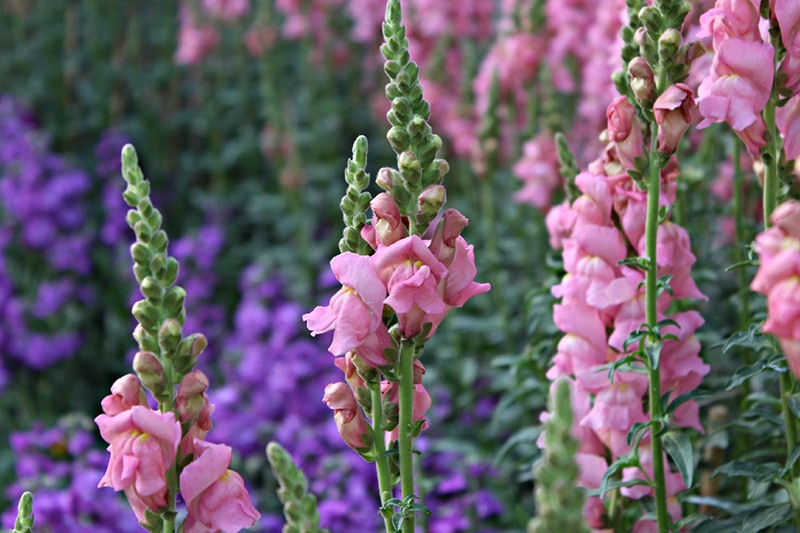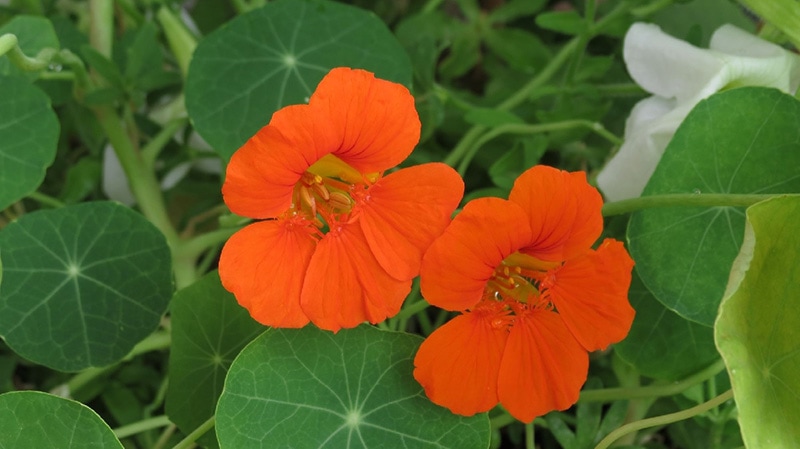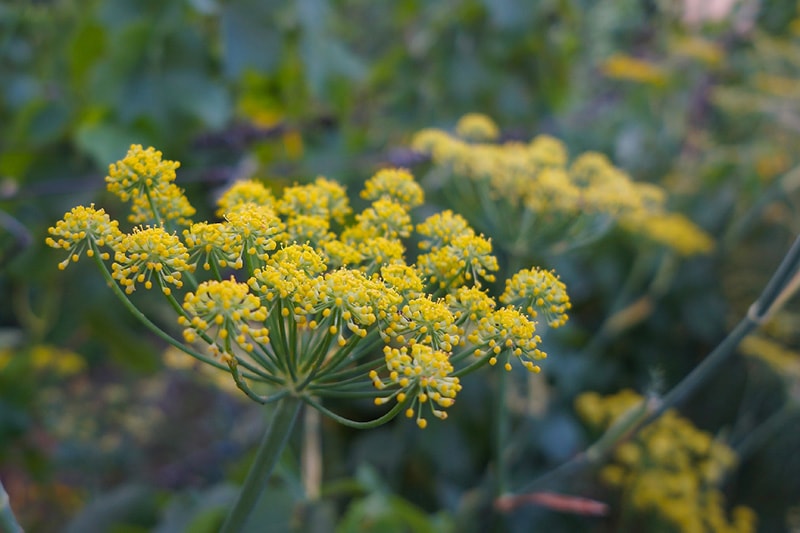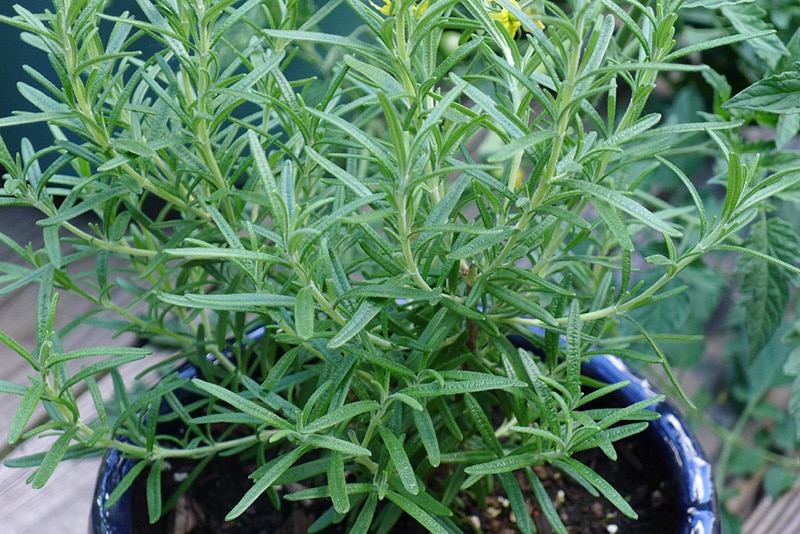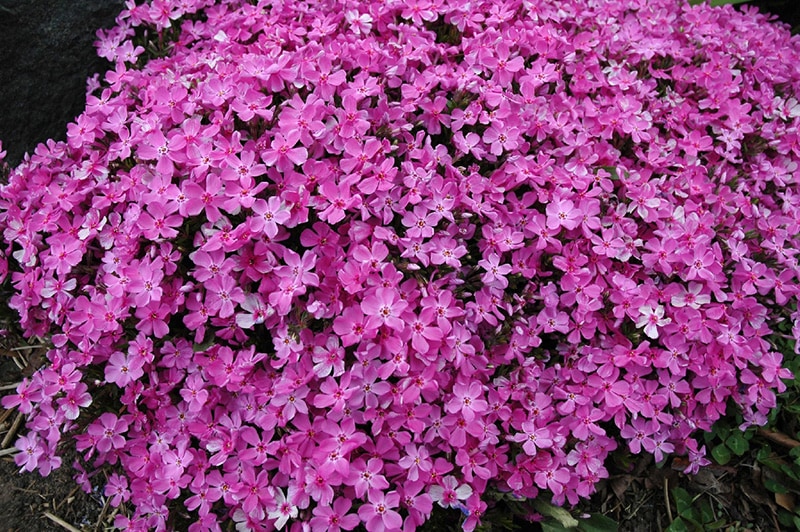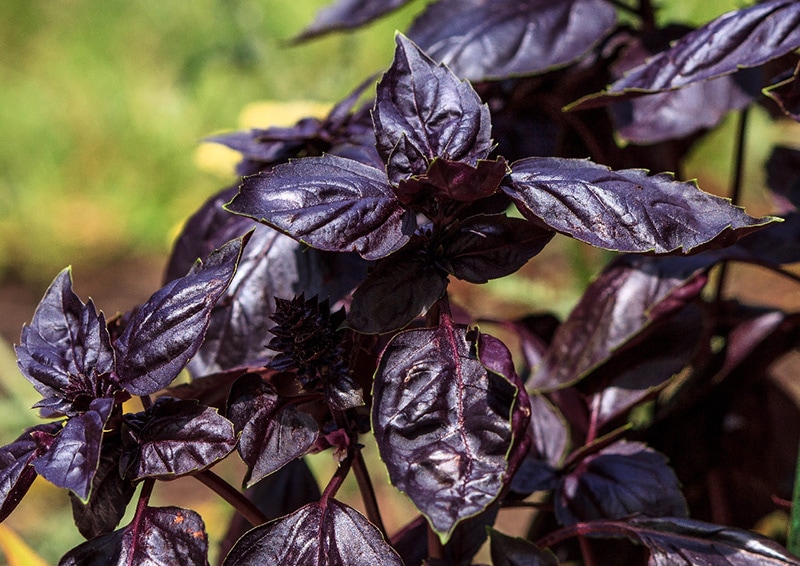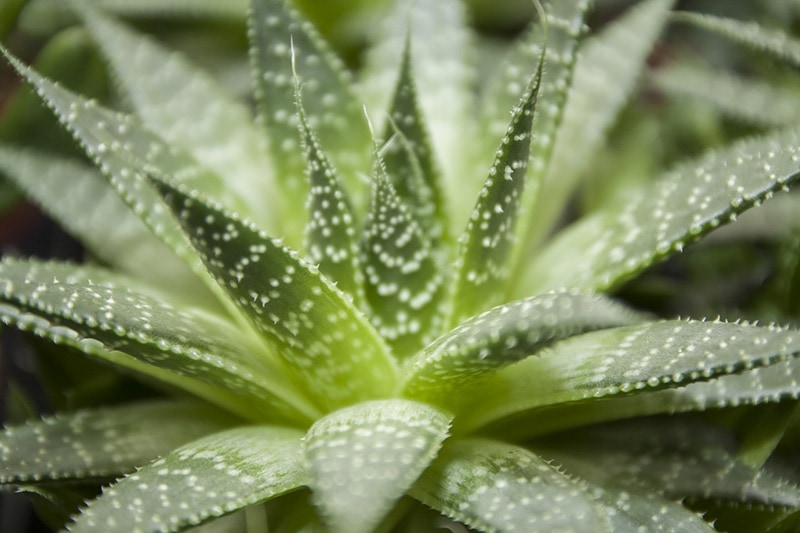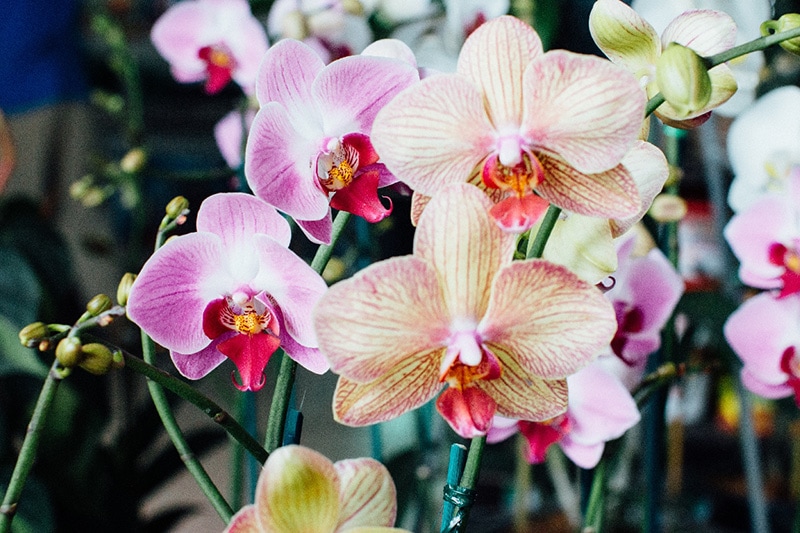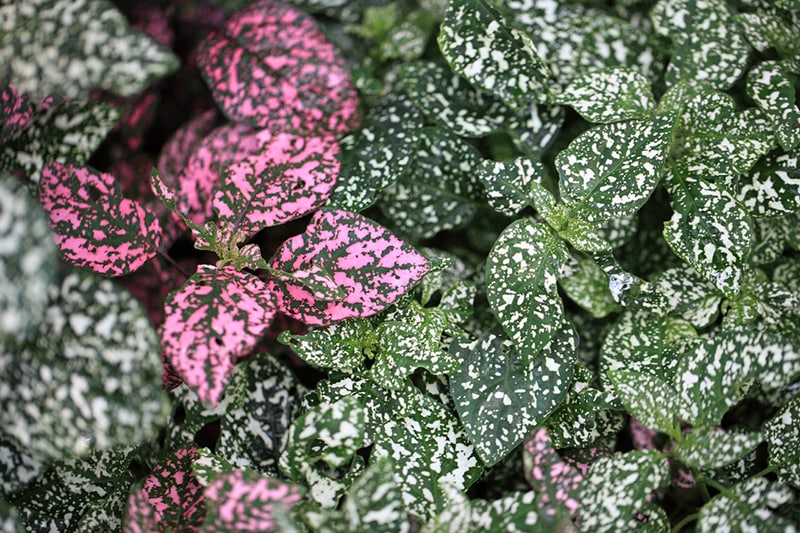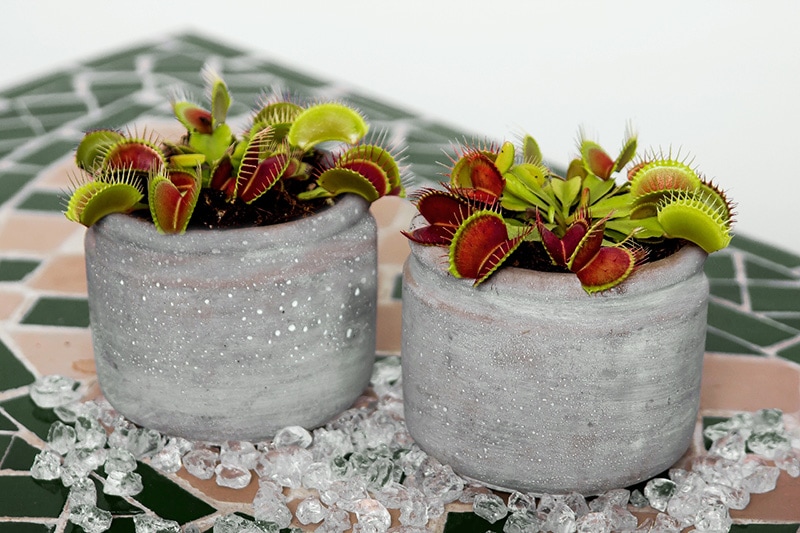We love our pets and plants, but sadly some of our favorite plants may be toxic for our companions. If you want to add greenery to your home and color to your garden while keeping your dog safe, you will be happy to know that there are plenty of options!
Whether you prefer bright flowers or greenery draping from a basket, there is something for you. We have put together a list of 21 outdoor and indoor plants you can grow today without posing a risk to your furry companion.
The 21 Common Plants That Are Safe for Dogs
Outdoor Plants
1. Succulents
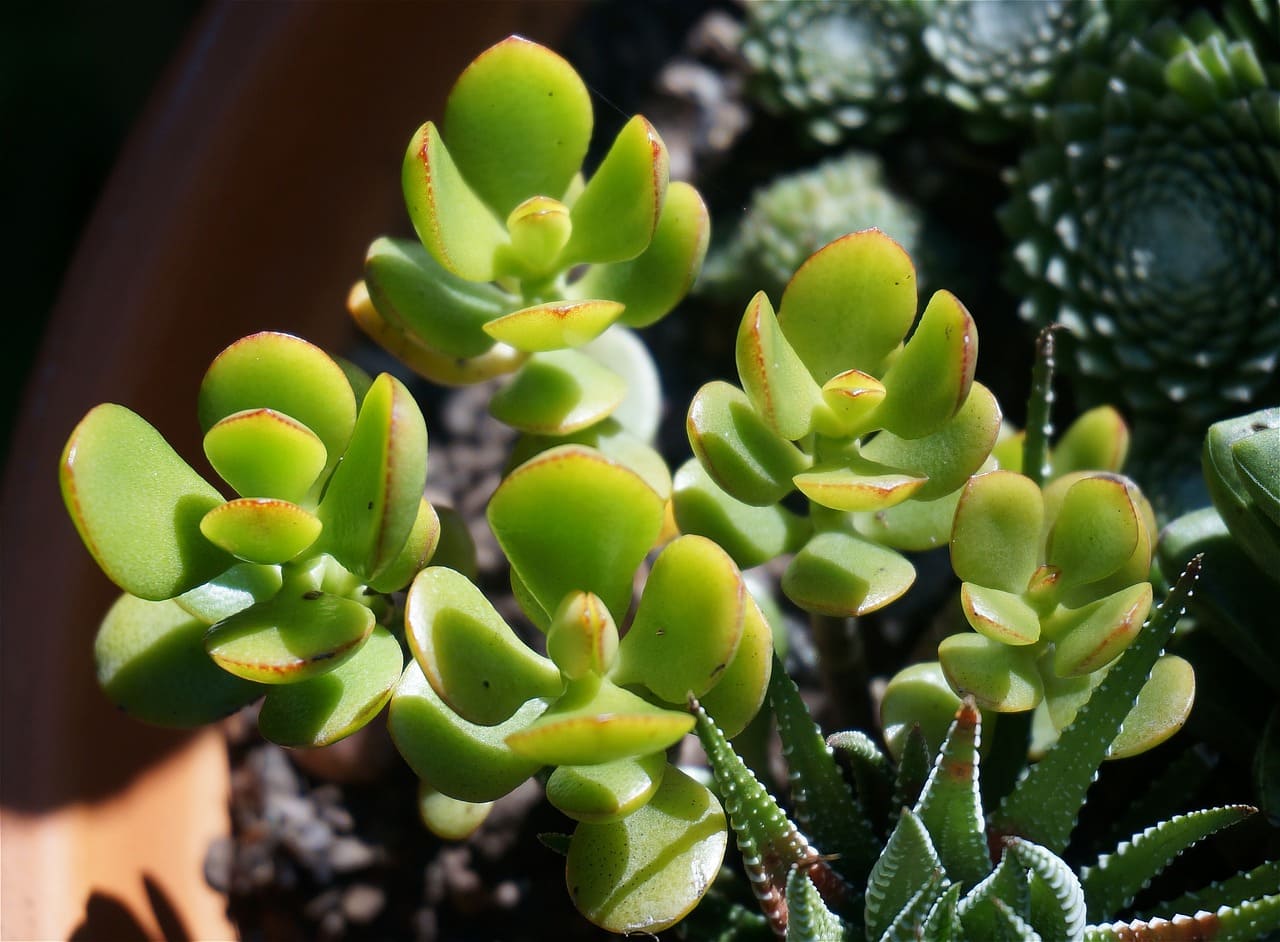
| USDA: | 3–9 |
| Sun: | 6 hours per day |
| Placement: | Sunny area, well-draining soil |
Succulents are one of the easiest plants to care for, and the variety of shapes, colors, and textures available brighten any garden. You can add a rock garden filled with a variety of pet-friendly succulents, or you can showcase them individually in containers. They are sun lovers, so a sunny spot such as the patio or sunny area of the garden is ideal, with light watering approximately every 1–2 weeks.
2. Marigolds
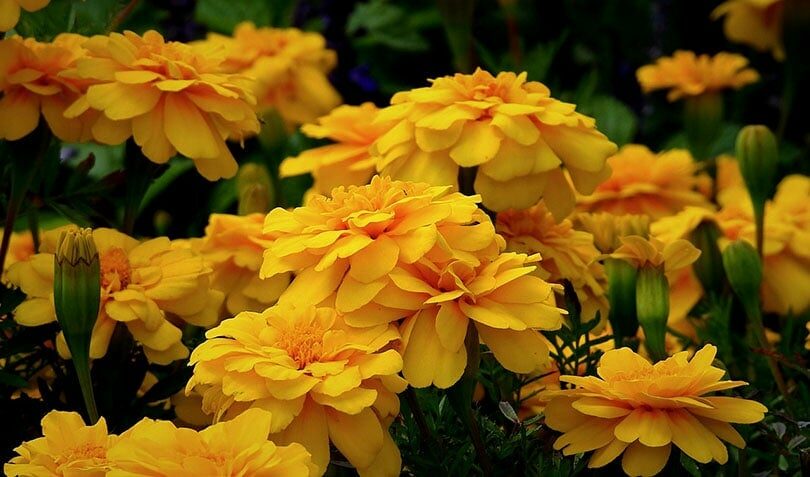
| USDA: | 2–11 |
| Sun: | Full sun |
| Placement: | Full sun, shade tolerant, 6–12 inches apart |
Not only do these flowers add a pop of color to your garden, but they also serve as pest repellants that keep unwanted pests away from your vegetables and attract pollinators such as bees. They come in several varieties, offering shades of bright yellow and orange. You can enjoy an abundance of these flowers in your garden, and if your dog enjoys them too, there is no need to worry since marigolds are perfectly safe.
3. Fuchsias
| USDA: | 10–11 |
| Sun: | Full sun to partial shade |
| Placement: | Moist well-draining soil, shade in the hottest part of the day |
Fuchsias are an elegant and dog-friendly addition to your garden, especially in containers or hanging baskets on the patio, and they are one of the most loved flowers among gardeners. Many varieties are available, ranging from white and pink to purple and deep red. Fuchsias are safe for dogs; in fact, they even have a sweet taste, so there is a chance that your dog is more dangerous to the flower!
4. Magnolias
| USDA: | 7–10 |
| Sun: | Full sun, light shade |
| Placement: | Moist, well-draining, slightly acidic soil |
Magnolias are another gardener’s favorite that provide incomparable beauty to the garden with their waxy green foliage and elegant, creamy white blooms. With approximately 125 species available, all varieties are safe for dogs. Some grow as trees, while some grow as shrubs, and some varieties are evergreen, providing interest all year round. You can add this dog-friendly plant to any sunny area in your garden as a statement piece or as part of a shrubby border.
5. Sunflowers

| USDA: | 4–9 |
| Sun: | Full sun |
| Placement: | Well-draining soil with enough room for tap roots |
Sunflowers will add a cheerful pop of color to a summer garden and are perfect as border plants or adding color among bushy green foliage. Sunflowers are loved by all, and you can enjoy these happy flowers in your garden while knowing they are safe for your dog. They also make stunning cut flowers for your living room, bringing an element of summer indoors. In the fall, their seeds will attract birds and bring more life to your garden.
6. Snapdragon
| USDA: | 7–11 |
| Sun: | Full sun |
| Placement: | Rich, well-draining soil |
Their name might sound like something you don’t want to expose your dog to, but these stunning flowers are harmless. They are usually grown as annuals, providing short-lived beauty to your landscape, either as border flowers or as a statement in containers to beautify your patio. When planted from seed, they are usually slow growing, so it’s best to purchase seedlings from a nursery so you can enjoy their beauty soon after planting.
7. Nasturtium
| USDA: | 9–11 |
| Sun: | Full sun |
| Placement: | Well-drained poor soil, space to spread |
Nasturtiums are a great addition to the garden for many reasons. They can tolerate poor soils and don’t require fertilizer to grow. Their flowers are edible and are a bright addition to the landscape. They also help to repel pests, which can protect your vegetable bed. Once established, you can separate the plant and easily add it to a new area of the garden or add it to hanging baskets.
8. Fennel
| USDA: | 4–9 |
| Sun: | Full sun |
| Placement: | Open, sunny area with well-draining soil |
Fennel is a delicate-looking herb that is great for use in the kitchen if you enjoy the taste of licorice. While fennel is safe for dogs, it is highly beneficial for humans. It contains vitamins that are helpful for tissue repair, collagen production, and maintaining healthy skin. You can grow this bulb in containers and add it to your salads to enjoy the taste and health benefits.
9. Rosemary
| USDA: | 7–10 |
| Sun: | Full sun |
| Placement: | Light, well-drained soil |
Rosemary is an aromatic herb that is great for culinary use. It is easy to grow and is safe for dogs, and you can grow it in abundance. Rosemary plants produce small purple flowers, which contrast beautifully against the dark green foliage, and the creeping variety is excellent for filling up spaces. Rosemary can grow indoors and outdoors as long as it receives enough light. Use this herb to season various dishes such as roasts, casseroles, and stews. Adding a small amount to your dog’s food can help support their digestive tract.
10. Creeping Thyme
| USDA: | 4–9 |
| Sun: | Full sun |
| Placement: | Raised beds, rockeries, sunny spot with well-draining soil |
Creeping thyme is another beneficial herb you can grow in your garden that is safe for dogs and can be used to flavor various dishes. It makes a great groundcover and can be planted between pavers to create a living patio. It is easy to grow and doesn’t require much attention; it can withstand frequent foot traffic, which is another reason it is an excellent choice of plant to grow with dogs around.
11. Purple Basil
| USDA: | 9–11 |
| Sun: | Bright, direct sunlight |
| Placement: | Moist, well-draining soil, can tolerate partial shade |
Purple basil will add some gorgeous color to your garden beds and is an easy herb to grow with a sweet and spicy flavor. Purple basil is similar to green basil except for its more eye-catching foliage and intense aroma. This herb can be grown indoors and outdoors, either in the ground or in pots, and it is perfectly safe for dogs.
Indoor Plants
12. Spider Plant
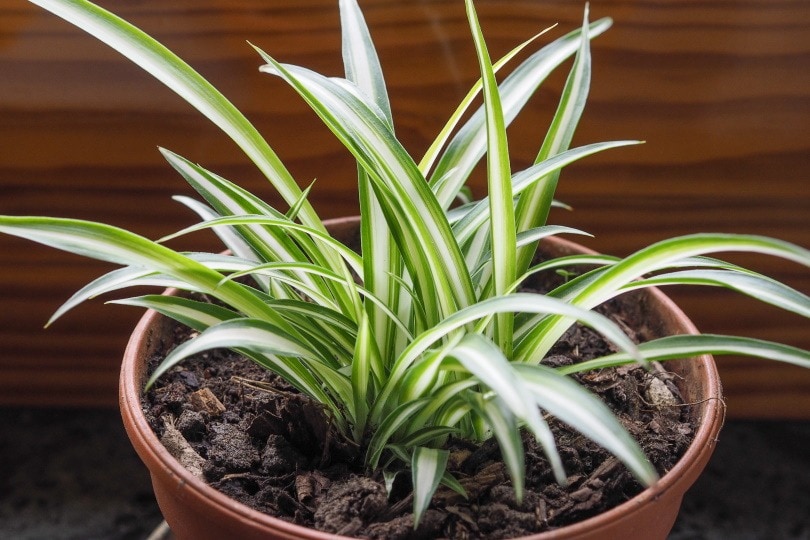
| Size: | 12–15 inches |
| Light: | Bright, indirect light |
| Placement: | Sunny spot with humidity. Small pot or hanging basket |
Contrary to its name, the spider plant is the perfect dog-friendly indoor plant. It is easy to grow and resilient and makes a great air purifier. The long, arched leaves make it an excellent plant for a hanging basket as long as it receives enough light. In the summer, spider plants produce long stems with small white flowers.
13. Zebra Cactus
| Size: | 5–8 inches |
| Light: | 6–8 hours of sun |
| Placement: | South or east-facing window sill |
The zebra cactus is a popular succulent that will make a striking statement in your living room. Even though they are safe for dogs, their pointy shape will be unwelcoming for a curious dog. With that being said, it’s best to keep them in an area your dog can’t reach so that they don’t get a jab in the nose or eyes. They are low maintenance, can go weeks without water, and can adapt to various light conditions.
14. Prayer Plant
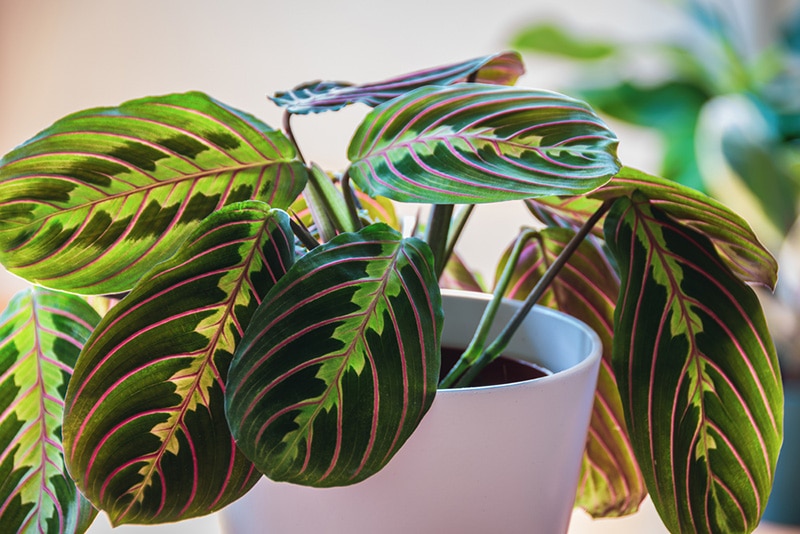
| Size: | 10–12 inches |
| Light: | Bright, indirect light |
| Placement: | Close to window, but they can tolerate low light |
The prayer plant is a unique and decorative plant that gets its name from the flat leaves that fold up at night and resemble praying hands. The leaves are dark green with yellow patches down the center and arching red veins stemming from them. It is tolerant of low light, so it is ideal for apartment living and safe for your furry roommate. Place this plant near a window where it can receive indirect sunlight and keep its soil moist.
15. Areca Palm
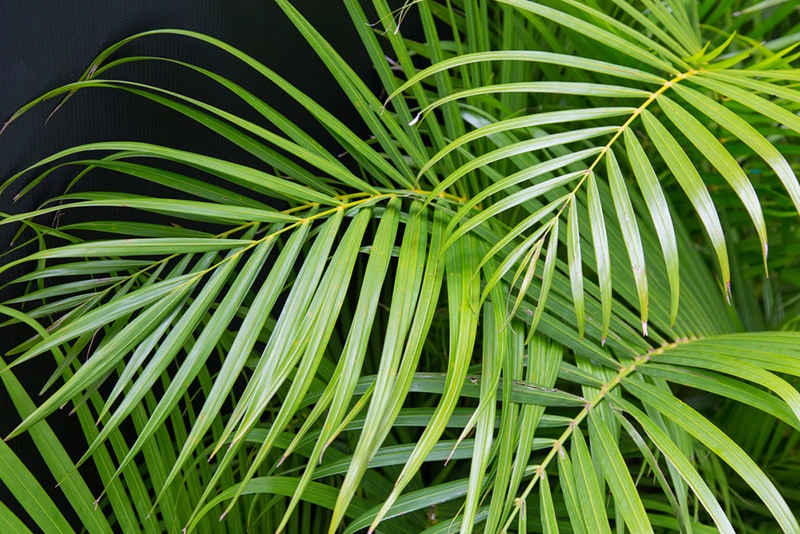
| Size: | 6–10 inches |
| Light: | Bright, indirect light |
| Placement: | South or west-facing window |
If you are looking for more of a statement piece to beautify an empty space in your home, a palm is a perfect choice. While some palms, like the sago palm, can be toxic to dogs, the areca palm is perfectly safe and will give your space a calming, tropical feel. Because of the plant’s long arching fronds, a curious pup may be tempted to chew on them, so consider placing it somewhere your pup can’t reach it. Your palm will need to be placed next to a window to receive enough light, but it will also benefit your plant to bring it outdoors in warm weather.
16. Parlor Palm
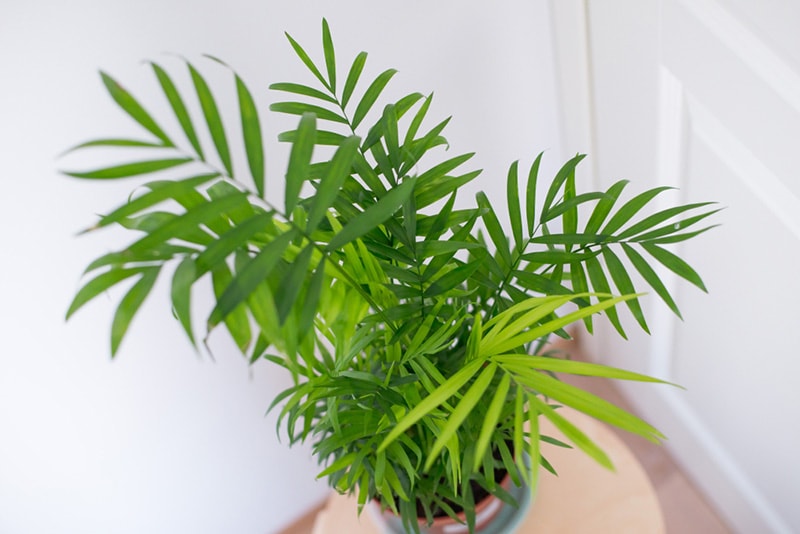
| Size: | 10–12 inches |
| Light: | Medium to bright indirect light |
| Placement: | Avoid direct sunlight |
The parlor palm is another popular indoor plant that is easy to care for and non-toxic to dogs. It can adapt to low light and handle low temperatures, so it is an ideal plant for beginner gardeners. Place a parlor palm in a large pot near a window where it can beautify your space and add a tropical ambiance. You can add this beautiful plant to your indoor patio or bathroom for a pop of greenery.
17. Money Tree
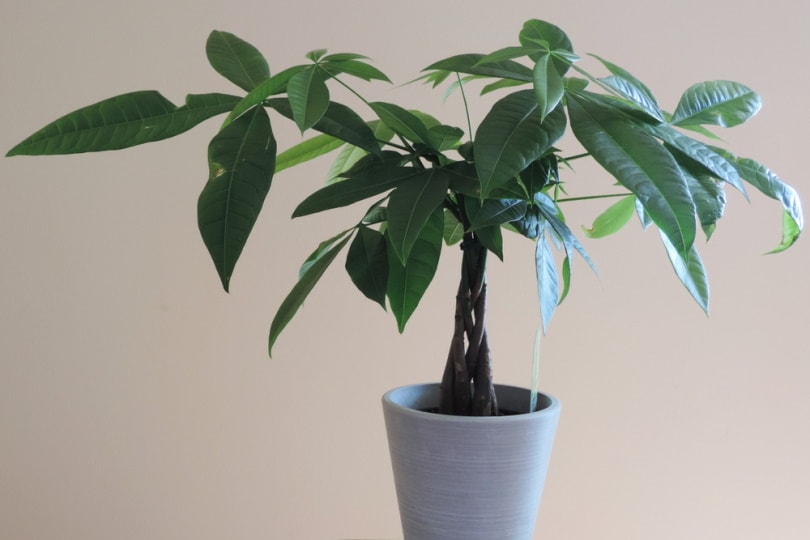
| Size: | 8–10 feet |
| Light: | Bright, indirect light |
| Placement: | Workspaces, bright kitchens, said to be bad luck in your bathroom |
Money trees are easy to grow and will brighten your home with their green foliage and braided stem. While they are safe for homes with pets, they are also considered to bring luck and prosperity, so that’s reason enough to add one of these plants to your space. In their native environment, they can reach up to 60 feet tall, but when grown indoors, they reach approximately 8 to 10 feet tall and can even be trained as bonsai.
18. Moth Orchid
| Size: | Up to 19 inches |
| Light: | Light areas |
| Placement: | Keep away from direct sunlight and wind or draughts |
Any home is incomplete with the pop of elegance that an orchid provides; fortunately, the moth orchid is dog friendly and easy to care for. They are gorgeous all year round and provide color to your living room. They are one of the easiest orchids to grow, so there is no need to feel intimidated, especially if you are new to orchids.
Place your moth orchid where it can receive indirect sunlight and add some water when the bark or moss it is growing in is dry to the touch. While the moth orchid is safe for dogs, it may be wise to place it somewhere where an excited pup can’t easily knock it over.
19. Baby Tears
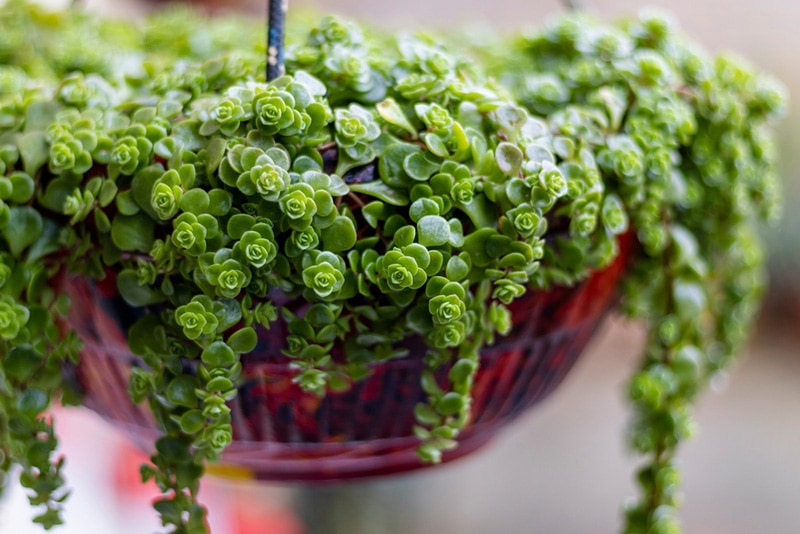
| Size: | 4 inches |
| Light: | Medium light |
| Placement: | Hanging baskets, east or west-facing window |
The tendrils of the baby tears plant display a beautiful cascade of greenery when planted in a hanging basket. While this plant is non-toxic and safe for dogs, if you have a cat, it may be too much of a temptation for them to jump up at it and play with it, and your kitty will most likely cause more harm than the plant. They are easy plants to care for but require a bit of attention to grow their best.
20. Polka Dot Plant
| Size: | Up to 12 inches |
| Light: | Medium to bright light |
| Placement: | East or south-facing window |
Add a splash of pink to your house plants with the dog-safe polka dot plant. High humidity, warm temperatures, and regular watering are key to growing these plants. They have a moderate growth rate, and when grown indoors in pots, they will remain small even once they reach maturity. This plant is perfect to spruce up your kitchen or bathroom since it will thrive in humid conditions.
21. Venus Flytrap
| Size: | 5–6 inches |
| Light: | Bright, indirect sunlight |
| Placement: | South facing window |
A Venus flytrap is a fascinating plant that can quickly become your favorite. It is a carnivorous plant that feeds on flies that land inside their alien-like mouths, which greatly benefits you and your dog if flies are abundant in your area. Although this plant may seem intimidating, it is dog-friendly and low-maintenance. Place it somewhere where it will receive at least 4 hours of direct sunlight and ideally somewhere where it can catch flies passing by.
In Conclusion
Whether it’s a big garden or indoor greenery you are looking for, there are plenty of dog-friendly plants for you to add to your landscape or home. Now you can enjoy your love of plants with peace of mind, knowing that your dog isn’t going to eat something they shouldn’t. While these plants are non-toxic, it’s essential to consider the placement to prevent your curious pup from chewing it up, knocking it over, or getting poked or scratched in the face. Happy planting!
Featured Photo Credit: JumpStory
Contents
- The 21 Common Plants That Are Safe for Dogs
- Outdoor Plants
- 1. Succulents
- 2. Marigolds
- 3. Fuchsias
- 4. Magnolias
- 5. Sunflowers
- 6. Snapdragon
- 7. Nasturtium
- 8. Fennel
- 9. Rosemary
- 10. Creeping Thyme
- 11. Purple Basil
- Indoor Plants
- 12. Spider Plant
- 13. Zebra Cactus
- 14. Prayer Plant
- 15. Areca Palm
- 16. Parlor Palm
- 17. Money Tree
- 18. Moth Orchid
- 19. Baby Tears
- 20. Polka Dot Plant
- 21. Venus Flytrap
- In Conclusion

